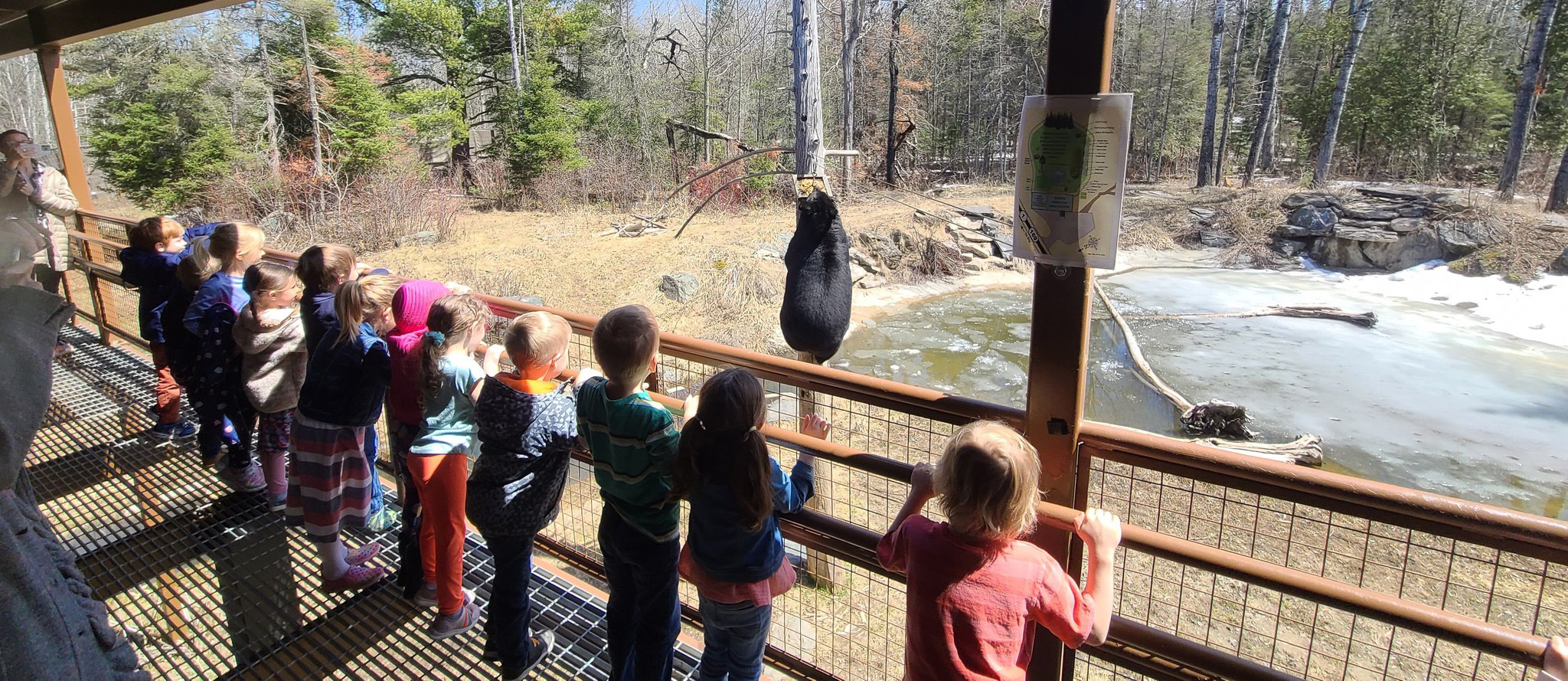
Bear News – OCTOBER 2025
Late fall news
Bear weights: Lucky 462, Holly 315, Tasha 368
Happy Autumn everyone!
This week I will talk about hibernation and how our bears prepare for it.
Dr. Lynn Rogers has written several documents on hibernation, including the stages a bear’s body goes through to prepare. It’s a busy year for the bear.
The stages differ in biochemistry, physiology, appetite, and level of activity. The onset and duration of the stages are genetically programmed to fit regional norms of food availability, which differ across North America.
For example, around Ely, fall food is scarce, so bears begin hibernation between September and October and remain in dens for 6 or 7 months until April. If supplemental food is provided to these bears in fall, they abandon it to begin hibernating on time, as they are genetically programmed to do. Bears around Ely usually continue hibernating through winter thaws.
There are 5 stages of Hibernation:
Stage 1— Hibernation of study bears in close dens is continuous dormancy with distinct decreases in heart rate and metabolic rate. They use up to 4,000 kcal per day, mainly body fat, and do not eat, drink, urinate, or defecate. They reduce oxygen consumption and metabolic rate to a little as 25% of summer rates and breathe once per 15 to 45 seconds. Heart rate can drop periodically to 8-21 beats per minute, and blood flow to skeletal muscle, particularly the legs, can be reduced by 45% or more, making some bears slow to become active in winter. Blood perfusion rates of peripheral tissues can fall below levels needed for aerobic metabolism in humans. However, wild mothers in open dens maintain near normal body temperature (high 90’s Fahrenheit), ingest their cubs’ urine and feces. They also lick up drops of meltwater, eat snow and icicles, urinate, and defecate. https://bear.org/bear-facts/5-
For more information Dr. Rogers has a peer reviewed paper ‘Bear Center Conducts Hibernation Study’.
The Ambassador bears begin their transition in mid- September. Their want for food decreases and they begin to choose denning sites. Our Holly will try various spots to dig her own and if that fails she turns to the man made dens.
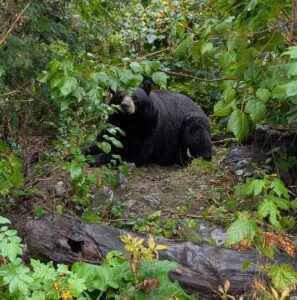
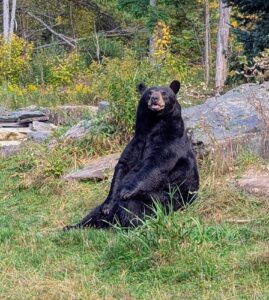
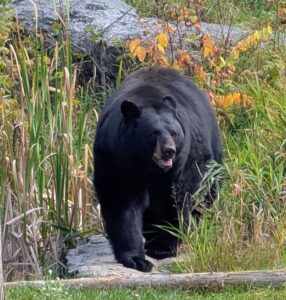
The bears will rake as much ground clutter as they can into their selected den; dead grass, clover, cedar and aspen leaves. The staff will supply them with balsam branches and bags of leaves as October approaches.
As mid-September arrived, Holly took an interest in Den 1. She is now raking ground matter and leaves into that den. She leaves the den for short periods but has become very protective of it.
Tasha has shown some interest in Den 3. She has not raked any bedding in yet but time will tell. This year there is a noticeable change in her behavior. Tasha has shown her age by resting and eating less during Fall Transition.
Lucky Bear, our oldest at 18 years, has also become more lethargic at this time. He continues to visit the viewing area where the “good stuff” is spread.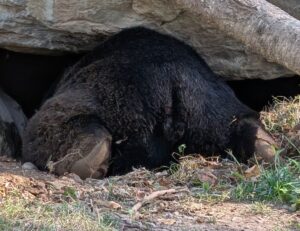
The cranberries, cherries, and different nuts provide a rich treat for the bears and are added to their enrichment toys. Their daily enrichment provides mental/physical stimulation and fats, carbs, and protein needed at this time of the year.
When we ask you to visit the Amazon Wishlist, this is what the cranberries, cherries, and nuts are used for. The pecans and brazil nuts along with the apricots are also used for target training. Target training happens daily, and is consistent with reward. 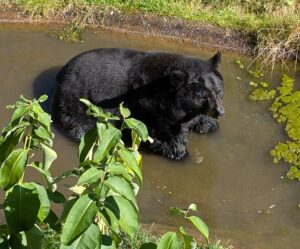
We use 6 pounds of cranberry and 6 pounds of chopped pecans every three days for enrichment. We use brazil nuts and apricots for daily target training.
The information about hibernation and fall transition can be found on our website. www.bear.org
I want to thank-you everyone for a great season of supporting us. We will continue posting really neat things on our FB page. You may also want to visit our Amazon wishlist list: https://bear.org/support-us/
Thank-you for all you do for the bears,
Sharon Herrell, Sr. Bear Keeper
We are a 501(c)(3) non-profit that relies entirely on the support of visitors, merchandise sales and people like you. We do not receive any state or federal funding.
Help support our mission.
Donate Now